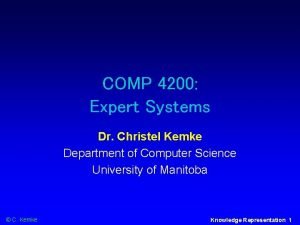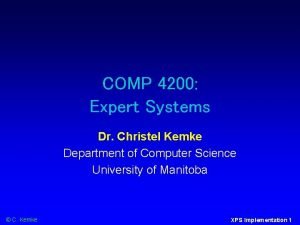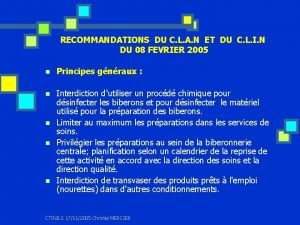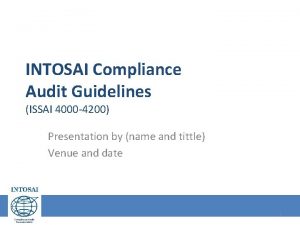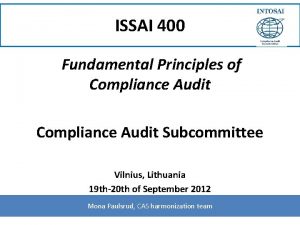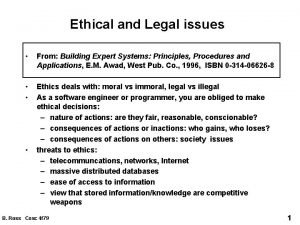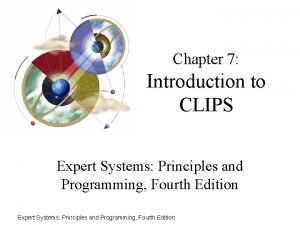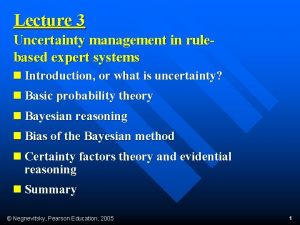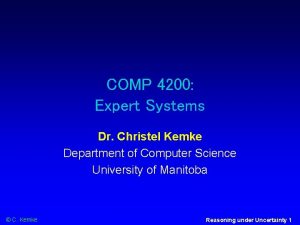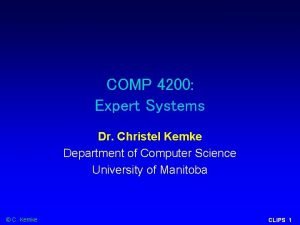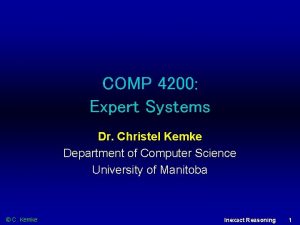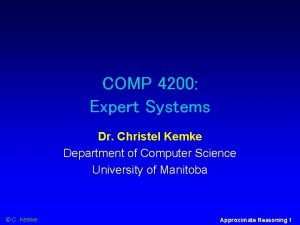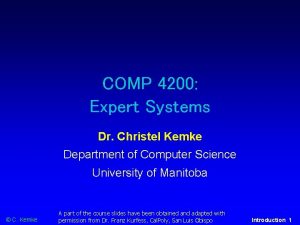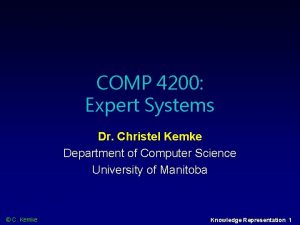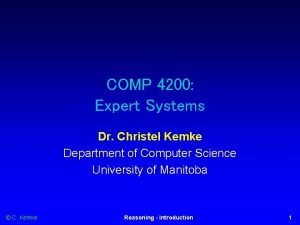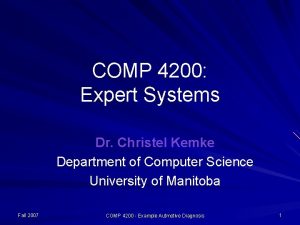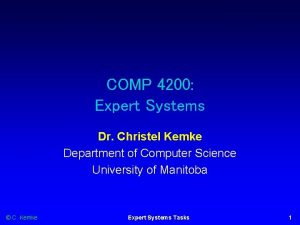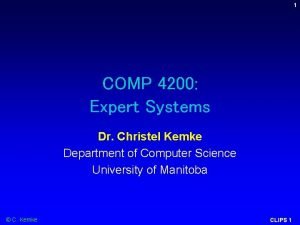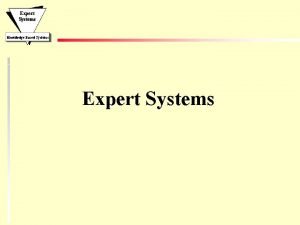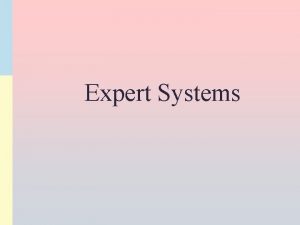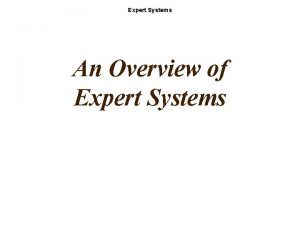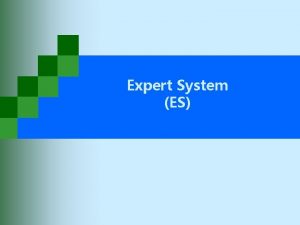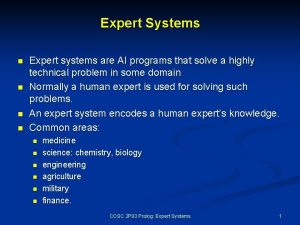COMP 4200 Expert Systems Dr Christel Kemke Department



















- Slides: 19

COMP 4200: Expert Systems Dr. Christel Kemke Department of Computer Science University of Manitoba © C. Kemke Classification Problem Solving 1

Classification Problem Solving Ø Heuristic Classification Ø MYCIN Ø MUD cf. Jackson, Chapters 11 and 12 © C. Kemke Classification Problem Solving 2

Classification Problem Solving Solution is selected from pre-defined set example: diagnosis of one of several described illnesses classification must not be direct and one-to-one but may involve intermediate levels of conclusions and uncertainty or ambiguity heuristic classification based on such "inexact" rules © C. Kemke Classification Problem Solving 3

Heuristic Classification Hierarchical organization of classes sub-classes inherit discriminative features sub-classes mutually exclusive solution classes can be enumerated hierarchy can involve different types of classifications use data to find suitable classes in hierarchy heuristic classification - up to final diagnosis / solution class, in a stepwise hierarchical classification process © C. Kemke Classification Problem Solving 4

Classification Problem Solving Steps Data Abstraction Heuristic Match map raw data into relevant categories, like 'blood sugar critical' or 'temperature very high' instead of dealing with exact measured values hypothesize broad class of solutions, e. g. for diseases, the symptom 'high body temperature' or 'fever' indicates an infection. Solution Refinement identify and rank solutions within broad solution class, e. g. by further conclusions based on given data or through collecting new data. © C. Kemke Classification Problem Solving 5

(Data) Abstraction Definitional Qualitative essential features of class / category e. g. mammals have life-born; animals have an excitable cell membrane abstracting over quantitative measures e. g. high/medium/low cholesterol; battery status okay/low/empty Generalization © C. Kemke abstracting in a hierarchy Leukopenia is a kind of immunosuppresion; . . . Classification Problem Solving 6

Classification Problem Solving: Mycin D a ta A b st r a ct io n Compromised Host Classification Diagnosis Immunosuppressed Host © C. Kemke Gram-negative Infection E. Coli Infection R ef in e m e nt Leukopenia Low WBC < 2. 5 Classification Problem Solving 7

Generic XPS Task (Chandrasekaran) Domain Knowledge Description of various forms of domain knowledge and structure, organization of this knowledge Control Regimes Control flow in Problem Solving / XPS Performance © C. Kemke Classification Problem Solving 8

Tasks 1 (Chandrasekaran) Viewpoint of Hypothesis Evaluation Hierarchical Classification select explanatory hypothesis from hierarchically organized space of alternatives; refine hypothesis to account for data; test against data Hypothesis Matching weigh evidence regarding goodness of fit of hypothesis with respect to observed facts (data); include prior probability of hypothesis, match with data, comparison of competing hypothesis © C. Kemke Classification Problem Solving 9

Tasks 2 (Chandrasekaran) Knowledge-directed Information Passing Background knowledge and rules about relations (causal, inferential) in the domain, e. g. if it's below -40 C a car may freeze and thus not start. © C. Kemke Classification Problem Solving 10

MUD © C. Kemke Classification Problem Solving 11

Classification Problem Solving II MUD Expert System MUD: determine cause of observed symptoms in drilling fluid domain MORE: classification involves causal model of the domain: causal chain from factors in the environment (diagnosis) to observable properties of the drilling fluid (symptoms) rules involve evidence factors for H being true if Condition is present / not present © C. Kemke Classification Problem Solving 12

MUD – Part of Causal Model MBT shale contamination increase in solids gradual decrease in density increase in viscosity rapid water influx © C. Kemke increase in unemulsified water oil mud in use Classification Problem Solving 13

MUD – Knowledge Symptoms – observed during diagnosis, search for explanation, e. g. increase in viscosity Attributes – further discriminate symptoms, e. g. rapid decrease in attribute value Events – possible causes of symptoms; are hypotheses, e. g. water influx Background Conditions – influence a-priori probabilities of events, causes, and conditional probabilities of effects (e. g. oil mud in use) Tests to determine background conditions (MBT to test increase of solids in drilling fluid) Test Conditions which influence accuracy of tests © C. Kemke Classification Problem Solving 14

MUD – Knowledge Acquisition Different types of knowledge acquired Differentiation – seek symptoms S that distinguish between hypotheses (diagnosis) H Frequency Conditionalization – determine a-priori probabilities of H involving background conditions Symptom Distinction – identify special properties of symptoms that indicate underlying cause Symptom Conditionalization – find conditions which indicate that diagnosis H is true if symptoms S are present © C. Kemke Classification Problem Solving 15

MUD – Knowledge Acquisition Path Division – uncover intermediate events I between symptoms and hypotheses which have stronger (statistical) connection to H than S, i. e. I is better indication for H than S alone. Path Differentiation – uncover intermediate events between symptoms and hypotheses in order to distinguish different H with similar S. Test Differentiation – determine the degree of confidence in test results (reliability of tests). Test Conditionalization – determine background conditions which influence reliability of tests. © C. Kemke Classification Problem Solving 16

Probability Theory Background Probability P of a hypothesis H: unconditional (a-priori, prior) probability of hypothesis H on it’s own: P(H) example: throwing a six with a perfect dice conditional (posterior) probability of hypothesis H depending on observed event E: P(H|E) example: H outside temperature is below 0 C; event E the date © C. Kemke Classification Problem Solving 17

Probability Theory Example 1 Unconditional Probability Determine the probabilities P of the hypotheses H: example: throwing a perfect dice 1. What is P(H 1) with H 1=dice shows a 6? 2. What is P(H 2) with H 2=dice shows a 1? 3. What is P(H) with H=dice shows a 6 or a 1? 4. What is P(H 1 or H 2)? © C. Kemke Classification Problem Solving 18

Probability Theory Example 2 Conditional Probability Guess the probability P of the hypothesis H: example: Is it below 0°C outside? Hypothesis H outside temperature is below 0°C; Event E the current date 1. What could P(H|E) be? 2. What would then be the probability that it is equal or above 0°C outside, i. e. P(not(H)|E) ? Note: H and not(H) are complementary hypotheses. © C. Kemke Classification Problem Solving 19
 Kemke net
Kemke net Kemke net
Kemke net Christel daniel
Christel daniel Como prevenir el acoso escolar - wikipedia
Como prevenir el acoso escolar - wikipedia Ccxllll
Ccxllll Christel mercier
Christel mercier Marte henriksen
Marte henriksen Michael christel
Michael christel Christel van den eynde
Christel van den eynde 9300 to 34800
9300 to 34800 Srx 4200
Srx 4200 Three types of audits
Three types of audits Checkpoint 12600
Checkpoint 12600 Audit and compliance principles
Audit and compliance principles Legal expert systems
Legal expert systems Clips expert system
Clips expert system Uncertainty management in expert systems
Uncertainty management in expert systems Introduction to artificial intelligence and expert systems
Introduction to artificial intelligence and expert systems Fuzzy expert systems
Fuzzy expert systems Fuzzy expert systems
Fuzzy expert systems
